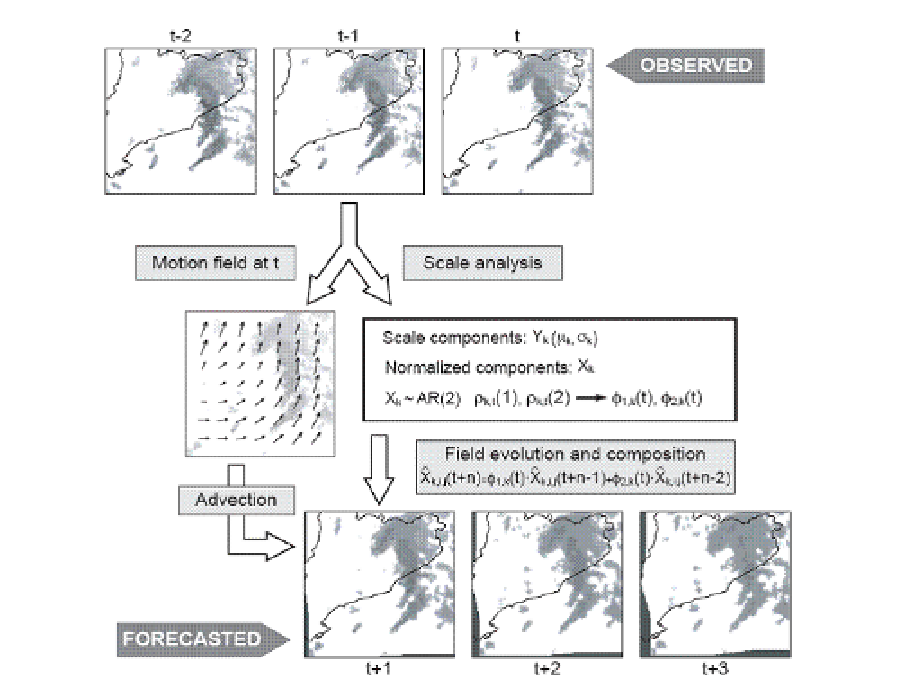Geoscience Reference
In-Depth Information
Fig. 2. The generation of an extrapolation nowcast using the Spectral-Prognosis (Seed, 2003)
multi-scale decomposition (cascade) framework (after Berenguer et al., 2005) . The motion of
the precipitation field is derived from radar inferred analyses of precipitation rate valid at
t
and
t-1
(typically a 10 or 15 minute time step). The temporal evolution of the extrapolated
field is modelled on the hierarchy of scales produced by the cascade decomposition, using a
hierarchy of second order auto-regressive (AR-2) models - one for each scale - and the
analyses of precipitation rate valid at
t
,
t-1
and
t-2
.
3.8 Improvements in extrapolation techniques
The past two decades have also seen further refinements to the extrapolation schemes exploited
by precipitation nowcasting algorithms, notably in the form of COTREC (Li et al., 1995;
Mecklenburg et al., 2000), Variational Echo Tracking (VET; Germann & Zawadzki, 2002) and
optical flow (Bowler et al., 2004, Peura & Hohti, 2004). COTREC constrains the cross correlation
diagnosed displacement vectors using the two dimensional continuity equation. This is
equivalent to minimizing the divergence of velocities derived for adjacent blocks. The benefits
over TREC (Rinehart and Garvey, 1978) were shown to be due to the elimination of spurious
motion vectors caused by clutter, beam blockages and rapid changes in the precipitation
pattern. In common with optical flow, the VET scheme diagnoses a field of motion by direct
application of the optical flow constraint equation. Bowler et al. (2004) solve this equation before
applying a smoothness constraint where as Germann and Zawadzki (2002) uses a conjugate
gradient method to minimize residuals from two constraints simultaneously.

